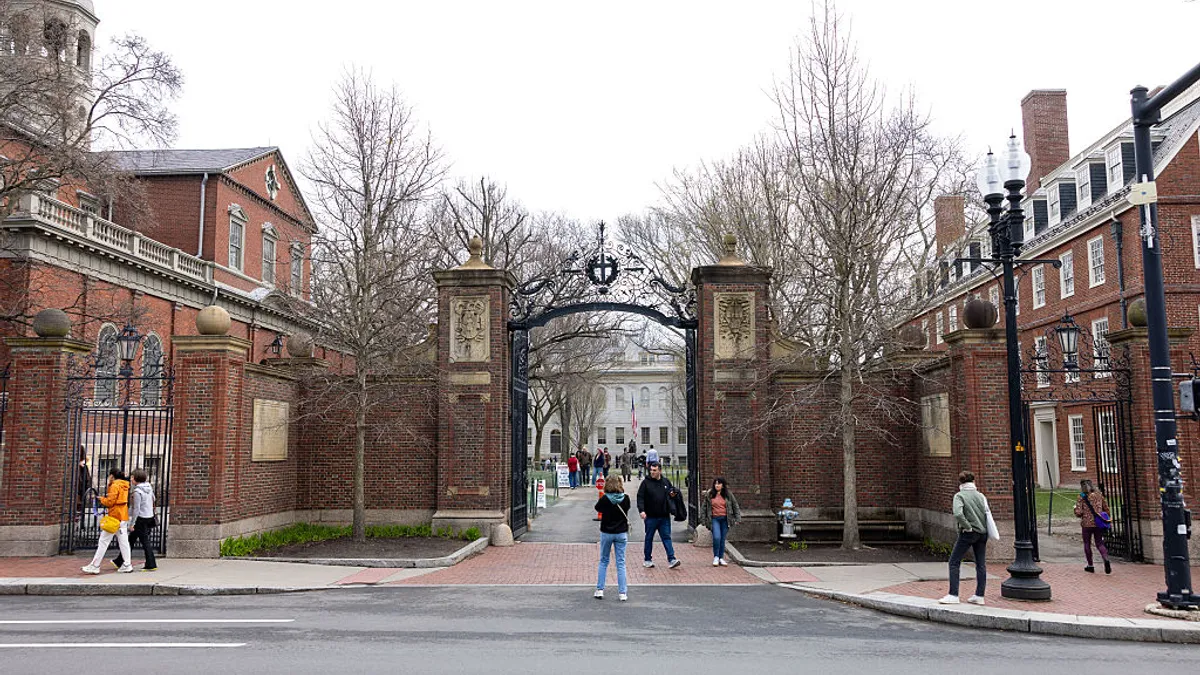Is America's student loan system about to head Down Under?
President Joe Biden’s announcement of student debt forgiveness in August included changes to income-driven repayment plans. The plans peg the amount a person pays toward their student loan debt each month to their income. If the borrower hasn’t met a certain level of income, they don’t have to pay.
Biden wants to offer more generous terms under income-driven repayment, which could mean more people choose to use the alternative loan system. Currently, only about 30% of borrowers are enrolled in income-driven repayment plans.
An expansion could place America’s loan system closer to that of other countries that depend primarily on income-contingent loans. Australia was the first country to pioneer such a loan framework in 1989.
“There’s been quite a few people quietly looking at the Australian system,” said Paul LeBlanc, president of Southern New Hampshire University. “I think we’re migrating towards it.”
What can the U.S. learn from examples Down Under? Experts have different opinions about how well Australia’s loan system has worked and what the key takeaways might be.
Jason Delisle, senior policy fellow at the Urban Institute, said the income-driven repayment options announced by Biden are on the whole more generous than those available in Australia.
“This is probably beyond what Australia has done in terms of subsidizing higher ed through the loan system,” Delisle said.
Problems under Australia's system
Under the Australian system, borrowers pay 1% to 10% of their income toward their loans, depending on how much they earn. Borrowers pay nothing until they earn 48,361 Australian dollars per year, the equivalent of about $32,000 in U.S. currency.
In the U.S., Biden’s plan would have borrowers pay 5% of their discretionary income, with no interest accruing as long as they make payments. The income threshold would be set at 225% of the federal poverty line, so slightly more than $30,000 per year. Debt would also be forgiven after 10 years of payments for those who borrowed $12,000 or less.
Delisle said that nearly 90% of Australians who attend higher education take out loans. In the U.S., only 30% to 40% of students take out federal education loans each year, although about 70% are in some debt by the time they graduate.
More generous income-driven repayment terms could encourage more Americans to take on debt to fund their education, Delisle said.
“Because the loans are going to be so generous now, loans are going to become a more important and central part of financing degrees, which is the Australia model,” Delisle said. “I could imagine many community colleges that maybe didn’t promote student loan availability or even participate in the federal student loan system opting in now, because the repayment terms are so generous for their students.”
Other experts have raised concerns that the more generous income-driven repayment terms could attract bad actors, such as some for-profit institutions, that may have an easier time drawing students into enrollment and debt. Worries about private institutions aren't as applicable in Australia, where a majority of universities are public.
The Australian system has also traditionally had caps on enrollment at universities. It hadn't let vocational schools into the loan system. When those two restrictions were lifted around 2009, costs for the loan program went up, and policymakers made loan terms more strict, Delisle wrote in a 2018 post for the Brookings Institution.
“All the calls to emulate Australia have come amidst Australia’s system buckling under cost pressures and unpaid debt,” Delisle said.
A defense of income-contingent plans
Bruce Chapman is a professor of economics at Australian National University. He's also known as the architect of the Australian loan system.
Chapman said the system has worked well since it debuted and has needed few changes. It has been influential on the global scale, with income-contingent loans becoming the primary form of education lending in numerous countries, including the United Kingdom and New Zealand.
Changes to the repayment terms in the U.S. might help some borrowers, he said, but the U.S. still could learn much from Australia’s system.
“The ongoing problem is that the collection of U.S. college loans in the main does not take into account people’s financial capacity to pay,” he said. “And until it does, until it becomes across-the-board income-contingent, you will face these problems forever.”
Income-contingent loans, Chapman said, do not penalize borrowers for being unemployed, going into a low-paying career, or taking time to be a caregiver. They make loan defaults rare. In the U.S., about one in four borrowers will default in the first five years of repayment.
Australia makes the income-contingent loan system a bit easier for borrowers than the U.S. does. Enrolling in the American income-driven repayment system can be complicated and time consuming, Chapman said. Several different plans are offered to borrowers, and a litany of paperwork is required. In Australia, on the other hand, income-contingent repayment is the only option.
One of the biggest challenges of the income-driven repayment system in the U.S. is its method of collecting debt and evaluating income, Chapman said. In Australia, loans are serviced through payroll withholding by one’s employer, similar to how the U.S. does income tax and Social Security withholding. That means the Australian system is more responsive to employment changes and less work for borrowers. In the U.S., the system uses the previous year’s income to determine one’s repayment burden.
In 2018, Chapman and three co-authors wrote a paper looking at lessons from the Australian and British systems for American college lending. It illustrated options for an income-contingent loan system stateside. But Chapman said it did not start the debate he hoped it would.
American policymakers would do well, he said, to look beyond their own borders.





















